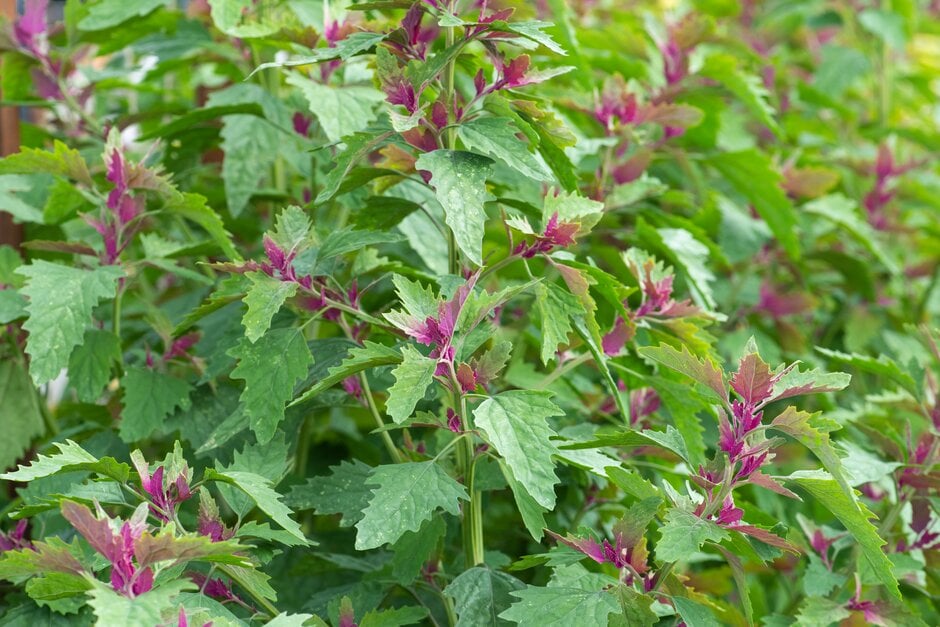Chenopodium giganteum
tree spinach
An edible annual with tiny yellowy green flowers and mid-green arrow-shaped serrated leaves. The younger leaves and centre rosettes open out bright magenta, making the leaves a striking addition to a salad. Tasting similar to spinach and chard, with a slight hint of asparagus when cooked. Keep picking for tasty and tender leaves, and to avoid the plant running to seed too soon
Size
Ultimate height
1.5–2.5 metresTime to ultimate height
1 yearUltimate spread
0.1–0.5 metresGrowing conditions
Moisture
Well–drained, Moist but well–drainedpH
Acid, Alkaline, NeutralColour & scent
| Stem | Flower | Foliage | Fruit | |
| Spring | Pink Green | |||
|---|---|---|---|---|
| Summer | Yellow Green | Pink Green | ||
| Autumn | Yellow Green | Pink Green | ||
| Winter |
Position
- Full sun
- Partial shade
Aspect
East–facing or South–facing or West–facing
Exposure
Sheltered Hardiness
H4Botanical details
- Family
- Amaranthaceae
- Native to GB / Ireland
- No
- Foliage
- Deciduous
- Habit
- Columnar upright, Bushy
- Genus
Chenopodium can be annuals or perennials, with often mealy stems and foliage, simple or lobed leaves and minute flowers in termianl or axillary clusters, in a few species followed by colourful fruits
- Name status
Correct
- Plant range
- N India
How to grow
Cultivation
Grow in any well-drained fertile soil, in a sunny or semi-shaded position. In the ideal growing conditions they can grow quite rapidly and may require staking if they become too tall
Propagation
Propagate by seed. See sowing vegetable seeds
Suggested planting locations and garden types
- Patio and container plants
Pruning
Harvest the leaves as required, to keep the plant compact and cropping well
Pests
Generally pest-free
Diseases
Generally disease-free
Get involved
The Royal Horticultural Society is the UK’s leading gardening charity. We aim to enrich everyone’s life through plants, and make the UK a greener and more beautiful place.
